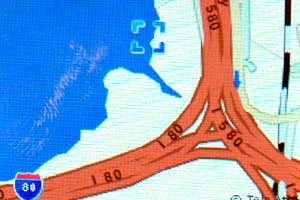The pilot project at UC Berkeley called Mobile Millennium uses cell phones as data points to show traffic patterns in real time.
To become an early adopter of the technology, you must have an unlimited data plan on a mobile phone with a GPS system. If you have that, you can sign up here.
Project leader Alex Bayen says that it's not just a breakthrough in how we can gauge traffic, but also a scientific breakthrough – that is, it was a challenge to take random data points, some in motion, some not, and to turn them into usable traffic information. This is how Alex Bayen put it.
[jwplayer config="QUEST Audio Player" skin="http://ww2.kqed.org/quest/wp-content/themes/quest/glow.zip" file="http://www.kqed.org/.stream/anon/quest/radio3-11_DialinginTraffic_blogextra1.mp3" ]

